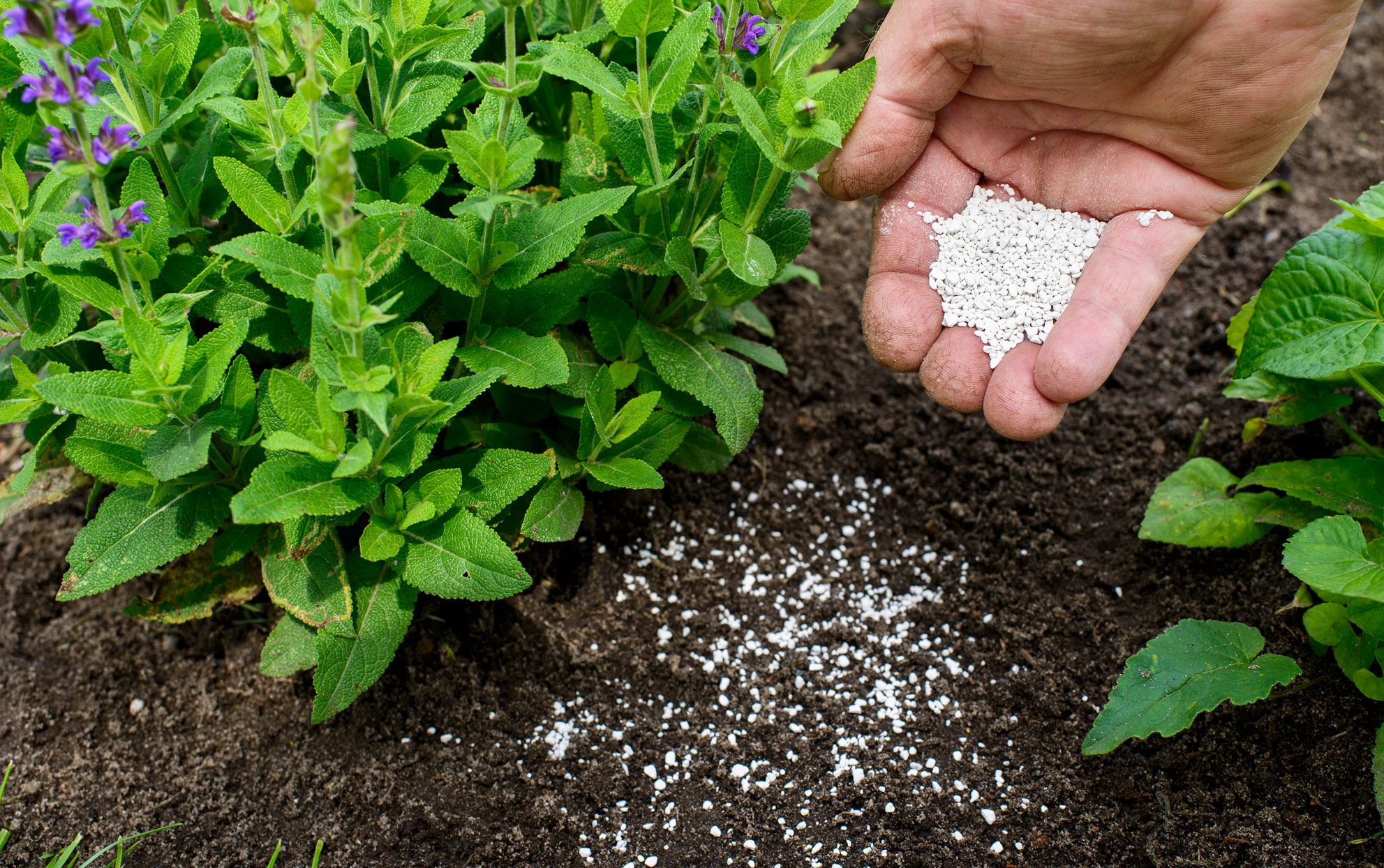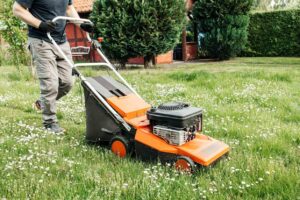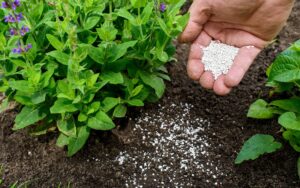Fertilizer Calculator: Ensuring a Healthy Lawn
Fertilizing your lawn is an essential step to keep your grass green, healthy, and resilient. With the help of a fertilizer calculator, you can determine the exact amount of fertilizer needed for your lawn or crops.
Fertilizer Application Calculator
Why You Should Fertilize Your Lawn
A well-fertilized lawn is akin to providing your grass with a balanced diet, ensuring its healthy growth and vibrant color. Grass, like any other plant, needs nutrients to grow strong, resist diseases, and withstand environmental stressors like drought or excessive heat. When you fertilize your lawn, you are supplementing the soil with essential nutrients that might be depleted over time due to various factors.
The three most critical nutrients for grass growth are Nitrogen (N), Phosphorus (P), and Potassium (K). Each of these nutrients serves a unique purpose:
- Nitrogen (N): Promotes lush, green growth and is required in large quantities. Lawns deficient in nitrogen often exhibit yellowing leaves and stunted growth.
- Phosphorus (P): Supports root development, energy transfer, and photosynthesis. Deficiency can slow growth and cause leaves to appear darker or even purplish.
- Potassium (K): Plays a crucial role in overall plant health, including regulating water and nutrient intake. Potassium-deficient grass may develop weak stems and exhibit yellowing or browning of the leaf edges.
Fertilizing your lawn helps replenish these vital nutrients, leading to thicker, greener grass that is more resistant to disease and drought.
What Does N-P-K on the Fertilizer Bag Stand For?
The N-P-K numbers on a fertilizer bag represent the percentage of Nitrogen (N), Phosphate (P2O5), and Potash (K2O) by weight. These numbers help determine how much of each nutrient the fertilizer contains and what it’s intended to address in your lawn.
For example, a fertilizer labeled as 10-10-10 contains 10% nitrogen, 10% phosphate, and 10% potash by weight. If the fertilizer contains no phosphorus or potassium, as is the case with some organic fertilizers, the label will still show the theoretical percentage based on how much of those nutrients would be needed to match their effect.
This N-P-K ratio allows you to select the right fertilizer based on your lawn’s specific needs. A soil test can give you more detailed information about what nutrients are lacking in your soil, helping you make informed decisions.
How to Choose a Type of Fertilizer
When selecting a fertilizer, the type of nitrogen it contains is one of the most important factors to consider. Slow-release nitrogen fertilizers are generally recommended because they gradually release nitrogen over time, ensuring your lawn is fed for an extended period. This also reduces the chances of over-fertilization, which can lead to nutrient burn and brown patches in your grass.
Slow-release fertilizers have several key benefits:
- They provide a more consistent feeding for your lawn.
- They minimize the risk of nutrient runoff and water pollution.
- They require less frequent application compared to fast-release fertilizers.
In colder regions, it’s important to choose fertilizers that can break down in cooler temperatures, as some organic options may not release nutrients effectively in cold soil. Always consult local experts or your local agricultural extension service to determine the best N-P-K ratio and fertilizer type for your area.
How to Calculate Fertilizer Application Rates per Acre
Fertilizer application rates are typically based on the amount of nitrogen needed per acre. To calculate how much fertilizer you need, use this formula:

For example, if you want to apply 43 lbs of nitrogen per acre and you have a fertilizer with an NPK ratio of 28-0-6, the calculation would be:

Next, to calculate how much fertilizer you need for your entire lawn, multiply the fertilizer rate by the area of your lawn. If your lawn is 1.5 acres, then:
1.5 acres × 154 lbs/acre = 231 lbs of fertilizer
This means you will need 231 pounds of fertilizer to cover your 1.5-acre lawn.
By using a fertilizer calculator, you can easily perform these calculations, ensuring you apply the correct amount of fertilizer for optimal lawn health. The calculator also helps prevent over-application, which can harm both your lawn and the environment.
Fertilizer Calculations in kg
Fertilizer calculations in kilograms (kg) involve determining how much fertilizer is required based on the size of your lawn or field and the nutrient composition of the fertilizer. To calculate this, the desired nutrient application rate (such as nitrogen) is divided by the percentage of that nutrient in the fertilizer. The result gives you the amount of fertilizer needed per unit area, typically measured in kg per hectare or per square meter. This calculation helps ensure that the correct amount of nutrients is supplied to the soil without over-application, which can harm plants or contribute to environmental damage.
Fertilizer Calculation Worksheet
A fertilizer calculation worksheet is a tool, often in spreadsheet format, designed to help users calculate fertilizer application rates. The worksheet typically includes sections where users input the size of the area to be fertilized, the desired nutrient rates (e.g., nitrogen, phosphorus, potassium), and the nutrient composition of the fertilizer. It may also calculate the total amount of fertilizer needed, the cost, and the number of bags required. This tool simplifies the process of calculating complex fertilizer applications, especially when dealing with large areas or multiple nutrients.
Fertilizer Calculation Formula
The formula for calculating fertilizer is generally straightforward:
Fertilizer needed (kg) = Desired nutrient rate (kg/ha) / (%Nutrient in fertilizer / 100).
For example, if you want to apply 50 kg/ha of nitrogen, and the fertilizer is 20% nitrogen (N), you would calculate the amount of fertilizer as follows:
50 kg N/ha / (20/100) = 250 kg fertilizer/ha.
This formula can be adapted for different nutrients such as phosphorus (P₂O₅) or potassium (K₂O).
How to Calculate the Amount of Fertilizer Needed
To calculate the amount of fertilizer needed, you first need to know the nutrient application rate recommended for your crop or lawn, typically expressed in kg per hectare (kg/ha). You then divide this by the percentage of the nutrient in the fertilizer (as found on the label). For example, to apply 60 kg/ha of nitrogen using a fertilizer that is 30% nitrogen, you would calculate:
60 / (30/100) = 200 kg of fertilizer per hectare.
How Much Fertilizer per kg
The amount of fertilizer needed per kilogram depends on the nutrient concentration of the fertilizer and the application rate required for your plants or crops. For instance, if you have a fertilizer containing 25% nitrogen, every kilogram of fertilizer will contain 0.25 kg of nitrogen. This relationship helps you decide how much fertilizer to use based on the nutrient requirements of the plants and the size of the area to be treated.
Fertilizer Calculation for the Stupid
“Fertilizer calculation for the stupid” is a tongue-in-cheek way of asking for a simple, straightforward method to calculate fertilizer needs. The basic approach is to determine how much of a particular nutrient (like nitrogen) you need to apply and then use the percentage of that nutrient in your fertilizer to calculate the total fertilizer required. Break it down into simple steps: area size, nutrient rate, and fertilizer content—then apply the formula:
Fertilizer needed = Nutrient rate / (%Nutrient in fertilizer).
Calculate How Much Fertilizer
To calculate how much fertilizer is required, first identify the recommended nutrient application rate for your lawn or crop. Then, determine the percentage of each nutrient (such as nitrogen) in the fertilizer. Divide the desired nutrient application rate by the percentage in the fertilizer to calculate how much fertilizer is needed per unit area. Use the area size to calculate the total fertilizer required for the entire plot.
Calculating Fertilizer Amounts
Calculating fertilizer amounts involves a few basic steps:
- Determine the nutrient application rate, typically in kg/ha.
- Identify the nutrient percentage in your chosen fertilizer.
- Apply the formula:
Fertilizer needed (kg) = Desired nutrient rate (kg/ha) / (%Nutrient in fertilizer / 100).
This calculation ensures that you apply the correct amount of fertilizer to meet your plant’s nutrient needs without wasting product or causing environmental harm.
When is the best time to fertilize?
The best time to fertilize your lawn depends on the type of grass and your local climate, but generally, it’s ideal to fertilize during the growing seasons when the grass can absorb nutrients effectively. For cool-season grasses (like Kentucky bluegrass and fescue), the best time to fertilize is in the early fall and late spring. Fall fertilization strengthens root systems and prepares the grass for winter dormancy, while spring application encourages healthy growth.
For warm-season grasses (like Bermuda and St. Augustine), the best time to fertilize is late spring to early summer when the grass is actively growing. Fertilizing in summer keeps the lawn green and strong.
Avoid fertilizing during the peak of summer for cool-season grasses or too early in the spring for warm-season grasses, as this can lead to weak growth or nutrient loss. Always follow soil test recommendations for nutrient requirements to avoid overfertilization, which can harm your lawn and the environment. A soil test ensures you’re applying the right amount of nutrients at the right time.






